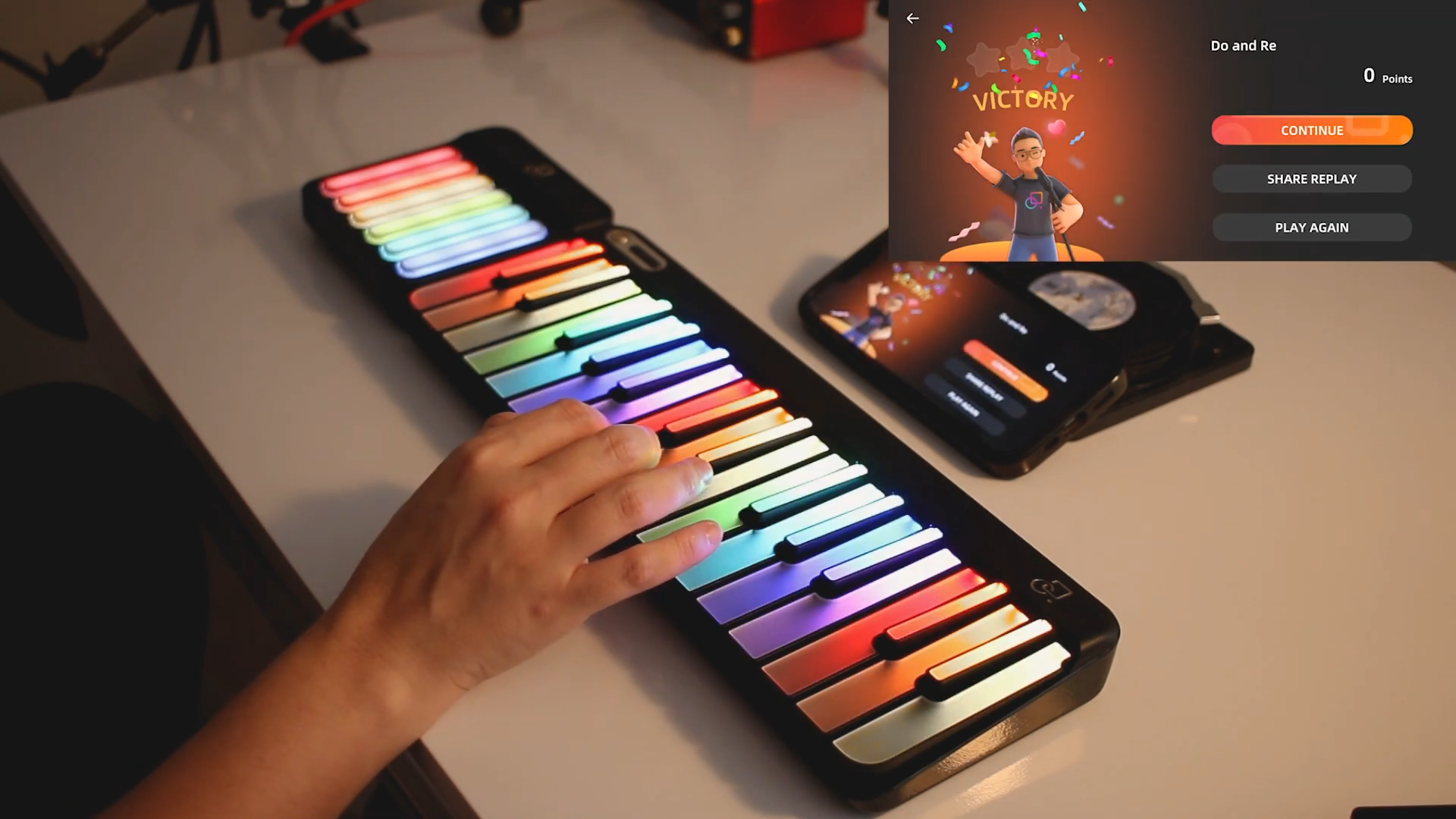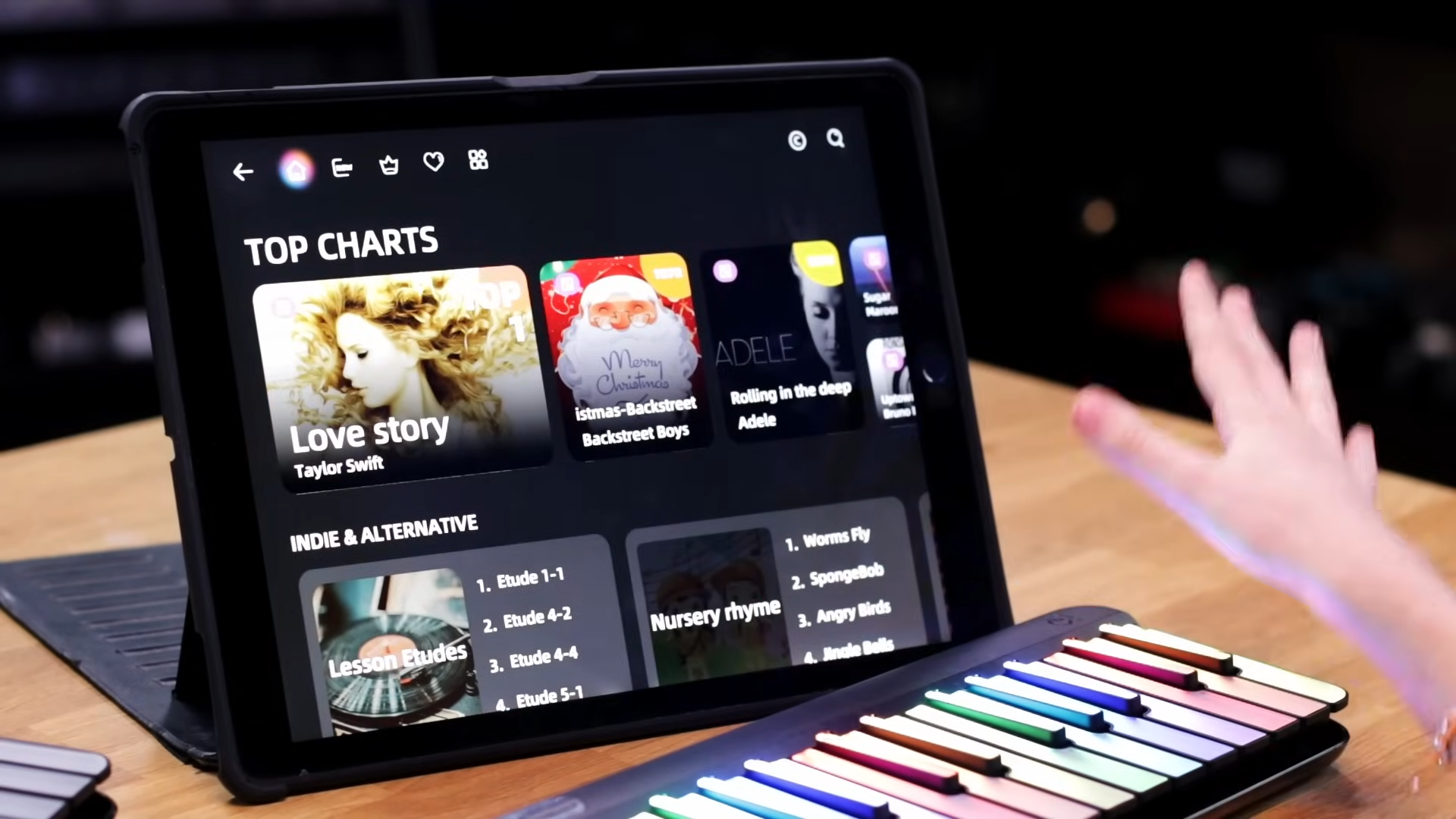
A clean instrument feels better, plays better, and lasts longer. If you’re wondering how to clean a smart keyboard without harming LEDs, sensors, or finishes, this guide walks you through a safe routine—from quick after‑practice wipes to a monthly deep clean. You’ll also learn how to clean piano keys (white and black), what not to use, and how to pick a gentle piano keyboard cleaner that won’t leave residue.
Cleaning is simple when you prep well. Follow these basics every time.
Power & placement
Gentle supplies (no harsh chemicals)
About dedicated “piano keyboard cleaner” sprays: Many are just mild surfactants. If you use one, test in an inconspicuous area and avoid anything that lists bleach, ammonia, acetone, or heavy fragrances.
This quick routine keeps grime from building up and makes deep cleans faster.
Use this once a month, or any time the board looks dull or sticky.
Now you’re ready for the most important part: how to clean piano keyboard keys.
Keys touch skin oils, sweat, and sanitizer residue—clean them right to keep the action feeling smooth.
1) Separate cloths by color
Use one cloth for white keys and another for black keys to avoid color transfer.
2) Mild wash (most days)
3) Sanitizing (occasionally)
4) Stubborn grime
5) Black keys feel slick?
Finger oils build up. Use the soap mix, then water‑only wipe, then dry. If needed, a quick alcohol pass restores grip.
Makeup/sunscreen smears
Soap mix → water wipe → dry. Repeat rather than scrubbing.
Sticky or sugary residue
Warm soap mix on a cloth; hold on the spot 10–15 seconds to soften, then wipe. Follow with water wipe and dry.
Yellowing on white keys
Usually UV aging. Don’t use bleach, peroxide gels, or abrasive powders. Gentle soap‑and‑water is safest; a single quick wipe with 70% isopropyl can brighten surface grime, but it won’t reverse deep yellowing.
Odors
Wipe keys and case with soap mix; let the instrument air out with the cover open (unplugged and powered off). Store a small sachet of activated charcoal or baking soda nearby (not touching the instrument) to absorb room odors.
When in doubt, mild soap + distilled water on a nearly dry cloth is the safest starting point for how to clean a piano keyboard.
This guide focuses on how to clean a smart keyboard (digital/electronic). If you also have an acoustic:
For electronic models with piano with lights features, the same “damp cloth, not wet” rule applies—especially near LED windows and seams.
You don’t need fancy products to keep your instrument in great shape. A few cloths, distilled water, and a gentle routine are enough to master how to clean a smart keyboard. If you’d like a compact instrument designed for easy care—with guided lessons and full‑key lighting—take a look at this smart keyboard or explore more learning tools.
Clean lightly, dry immediately, and keep the music going.
Use distilled water on a barely damp microfiber, wipe back to front, and dry immediately. This covers how to clean piano keyboard keys for everyday care.
Alcohol‑based, fragrance‑light wipes can work if you wring them out so they’re nearly dry. Avoid bleach and strong scents; always follow with a dry cloth.
Skip it on electronics and key plastics; it can leave smells and dull some finishes.
Wipe once with distilled water, then buff dry with a clean microfiber.
A mild soap‑and‑water solution is all most people need. If you buy a branded cleaner, test it, avoid harsh ingredients, and never spray directly on keys.
Unplug, remove sticky residue with warm soap mix on a cloth, repeat gently, then water wipe and dry. Let the keyboard air out before powering on.
Read more

How to Follow LED Lights on Piano: Beginner’s Guide
If you’ve just unboxed a piano with lights and you’re wondering how to follow LED lights on piano without picking up bad habits, you’re in the right place. Light‑guided keyboards are designed to sh...

Time-Saving Ways to Learn Piano (Beginner’s Guide)
If your schedule is packed but you still want to learn piano, this guide is for you. Below you’ll find practical, time‑saving ways to learn piano that reduce friction, build real skills, and keep y...